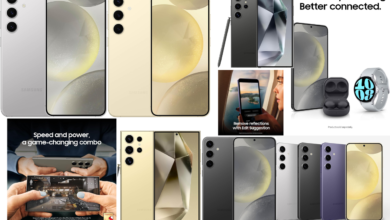History of the Motherboard

in a matter of minutes and this is possible because of how many different functions the average motherboard combines into 1 little slab of like fiberglass metal and silicon but it wasn’t always like this. In fact, early electronics didn’t have anything resembling the lovely green boards with black integrated circuits that were used today.
Instead it was common to see individual full sized wires linking every capacitor resistor, and other components necessary to make up a full computer system unsurprisingly. This approach took up tons of space added a bunch of weight, and was relatively fragile meaning that the printed circuit board took off in popularity pretty quickly starting in the 19 fifties it should be noted.
Also, check- Full Form Of Computer
Also, check- Full Forms
Early PC bees
However that these early PC bees were still a far cry from the RGB mother board that you might have sitting in your computer right now. While back then a simple device like a radio might have gotten away, with using just 1 PC be full-fledged computers needed many circuit boards to handle different functions connected by a back plane.
You might consider being a forerunner of the modern mother board only true mother boards though, these back planes tended to be dumb connections with no actual logic that consisted of little more, than a bunch of slots lined up in a row. So that other expansion cards could be plugged in for example the all tear AT 800 used 1 slot to insert a processor another for memory and so on.
It wasn’t until 1981 that we got a big upgrade the planer board in the original IBM PC, featured an end. L. 8088 CPU built in memory and actual external I. L.
Glorified bundle of wires
So it was far more than just a glorified bundle of wires like smushed together, all you could connect directly to it was a keyboard and a cassette drive. But it also included a handful of expansion slots that didn’t look too different from what we’re used to today, and those slots were important because motherboards were still, so simple that they didn’t have features that we consider basic.
Now like Dr headers for example so if you wanted to load up your copy of flight, simulator 1.no you would need a standalone disk interface card.
We didn’t see modern memory modules that fit into ram slots until the mid 19 eighties, either by the late eighties del engineers had fully embraced the goal of integrating more, and more functions onto the motherboard. So little IC’s called super I chips were becoming more common these functions like, rudimentary versions of a modern chips that they provided drive controllers ports for printers mice keyboards. Other devices and the system’s bios now that’ll doesn’t sound like a huge deal today but super audio chips took up less space.
Cost-effective than expansion cards
They were much more cost effective than expansion cards setting the stage for full featured modern other boards around the same time in 1987. Specifically we got the first ever integrated VGA graphics chips, when IBM released model 50 of their almost famous personal system too unlike modern integrated GPUs, though this was a chip that was affixed to the mother board instead of being built into the CPU itself.
A paradigm that we saw again starting in the mid 19 nineties as greedy GPUs, like the S. 3 trio and the ATI rage series appeared on motherboards obviating the need for. A separate card for basic use the GPUs that were soldered onto motherboards began to disappear in favor of 1’s, built into CPUs by the mid 20 tens speaking of CPUs let’s jump back again to 1989.
When the first CPU socket with a vaguely modern look socket 1 appeared alongside Intel’s wildly popular 86 processor, while earlier designs involves soldering the CPU directly to the board or significant force on the part of the user to insert or remove them.
CPU sockets
Socket 1 had a simple mechanism based around a pin grid array very similar to modern AMD sockets though with a mere 100 69 tens. but it wasn’t just CPU sockets that we were getting a facelift expansion slots were also changing at that time.
It was about time is the ancient ISA standard had been used since the days of the original IBM PC in 1994 PC I started, becoming popular in consumer PCs followed by the short-lived E. G. P. for graphics cards in 1997 and PCI express which is still with us today in 2004. But what about onboard networking in audio well in the mid 19 eighties there were a number of proprietary networking protocols.
But since the now familiar Ethernet was a relatively simple standard, with easy physical construction it became V. go to for networking in the late eighties and again. It’s simplicity meant that it quickly spread to PC motherboards in the early 19, nineties hello sound cards also started appearing on the market in the late eighties and early nineties.
Internal speakers that commit sin
We had little internal speakers that commit sin for a while we didn’t see true fully functional on board digital sound hit the mainstream until 1999. When Intel included the AC 97 standard and it’s 810 chipset which incidentally was also the first Intel chipset to include integrated graph. Meaning it was no longer necessary to have a separate chip for video processing be it on the motherboard or on an adapter card.
Read more here.




